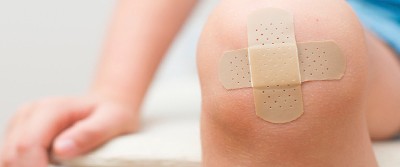New Electric Bandage Promotes Faster Healing

By Kylie Wolfe
For thousands of years, people have relied on natural remedies like herbs and bark to enhance healing. Now researchers are experimenting with more modern, tech-centric healing methods. They’ve developed a wearable, self-powered bandage that uses energy as a healing source, and the results are encouraging.
Modern-Day Wound Care
Xudong Wang, a material scientist at the University of Wisconsin-Madison, and his team have developed an electric bandage powered by simple body movements that can decrease healing time. Technology like this exists in hospitals to treat serious injuries, but this new, wearable approach would make it practical for the everyday user.
The version of this technology used in hospitals is bulky and requires a power source. This new bandage is the opposite. It also produces much smaller electrical pulses, likely preventing damage to healthy tissue.
Researchers tested the device on injured rats and compared their results to a control group that did not receive treatment. Those with electrified bandages healed in three days. Those without took just under two weeks to heal. Their results were published last fall in ACS Nano.
“We thought it might work, but we didn’t know how good it would be,” said Wang.
How It Works
The device is simple: electrodes connect to nanogenerators within the bandage. To produce power, the nanogenerators convert natural body movements into electricity, sending mild electrical pulses through the skin.
Applying this wonder-worker is also pretty simple. You place the electric bandage over the wound so electrodes can create a weak electric field around it. Sending small electrical pulses, it promotes improved migration, proliferation, and differentiation of fibroblasts, cells that are critical to the healing process.
"Our device is as convenient as a bandage you put on your skin," says Wang.
The bandage consists of overlapping sheets of polytetrafluoroethylene (PTFE), copper foil, and polyethylene terephthalate (PET).
A New Kind of Treatment
Scientists have known for decades that electrotherapy can heal wounds faster than other means, but their existing strategies weren’t nearly as practical as this one. It’s believed that, in addition to healing open wounds, this technology could help heal cosmetic concerns linked to chickenpox, acne, and others that often leave scars.
The possibilities are never-ending, but researchers will need to optimize their invention to meet the needs of each application.
One Step Further
Thanks to its size and overall simplicity, Wang and his team could make this kind of electrical therapeutic treatment accessible for those with minor injuries. From wearable electronics to medicine, their work proves promising.
Because of his team’s success, Wang hopes to take the design a step further. His goal is to build a nanogenerator that can produce electricity and power the bandage with the nearly undetectable energy of the human pulse.
Discussion Questions
- What makes this bandage practical?
- How do you see it being used in the future?
- In what ways can this technology be applied to other everyday products?
Vocabulary
- Electrode
- Electrotherapy
- Fibroblast
